
Printable Tooth Numbering Chart
There are four primary categories of human teeth: incisors, canines, premolars, and molars. All four categories have a specific function to aid in chewing food. As a child, you have 20 primary teeth. That number increases to 32 when your permanent teeth come in. Tooth names and numbers are important to your dentist, who uses them to document.

printable tooth chart Yahoo Search Results Tooth Fairy Ideas
Children have 20 primary, or baby, teeth. Primary teeth first start to appear when babies are around 6 months old.Children usually get all their primary teeth by the age of 3.. These teeth.
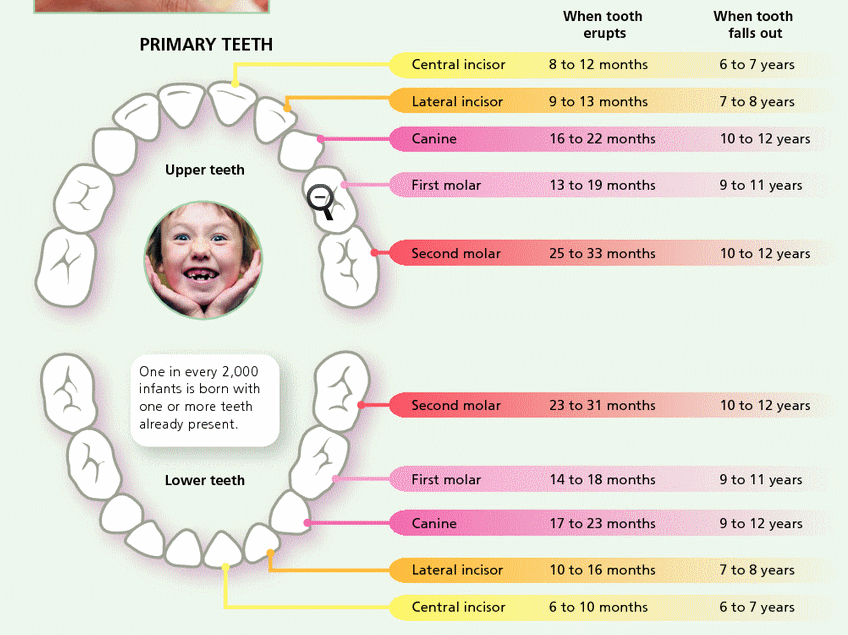
Pediatric Dentistry blog by Dr. Umar Imtiaz Here is a Primary (BABY
A dental chart is a graphical tool for organizing all the important information about your teeth and gums. Your hygienist, who checks the inside of your mouth, typically makes your dental chart.

Tooth numbering in the primary dentition (LHS) and permanent dentition
6 to 7 years. Other primary tooth eruption facts: A general rule of thumb is that for every 6 months of life, approximately 4 teeth will erupt. Girls generally precede boys in tooth eruption.

Tooth Eruption Charts Shrewsbury Orthodontics Monmouth County, NJ
Teeth numbers 1, 16, 17, and 32 are your wisdom teeth (3rd Molars). The teeth numbered 30 and 31 are your lower right molars. If you want to give your smile a new look with dental veneers (Fig. 4), your cosmetic dentist will enhance the most visible teeth in your mouth that always come out when you smile. These are teeth numbers 6 - 11 on the.
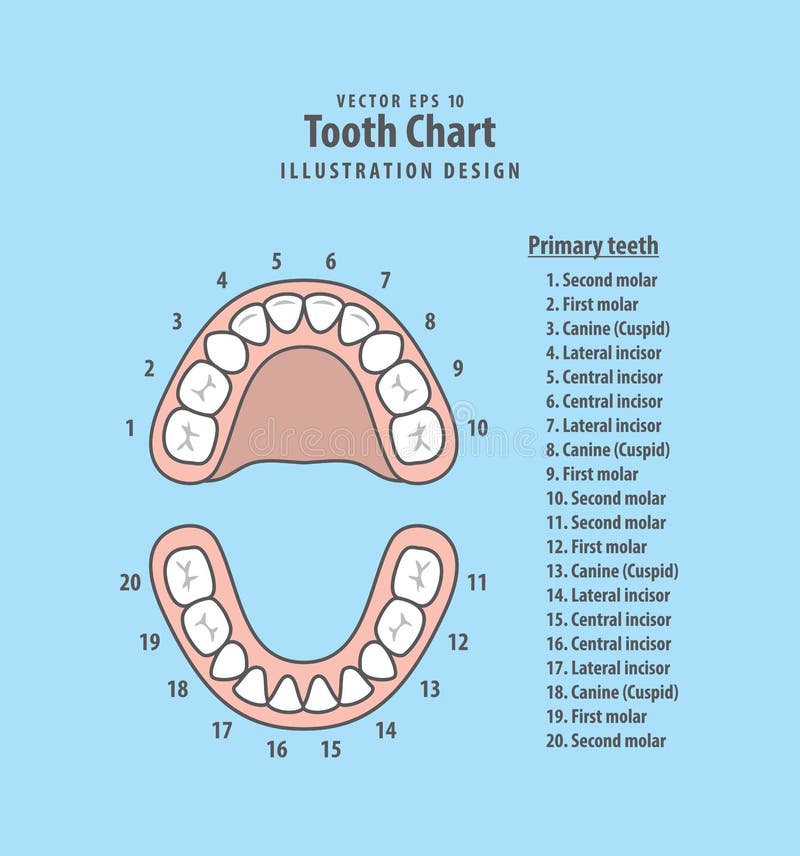
tooth number chart to identify primary teeth eruption charts 8 best
Here's a concise list of primary teeth names and their typical eruption timeline, as outlined in our free Primary Teeth Chart PDF: Upper Jaw (Maxilla) Primary Teeth Names and Eruption Timeline: Central Incisor: Generally erupts between 8-12 months. Lateral Incisor: Typically appears between 9-13 months. Canine (Cuspid): Erupts around 16-22 months.
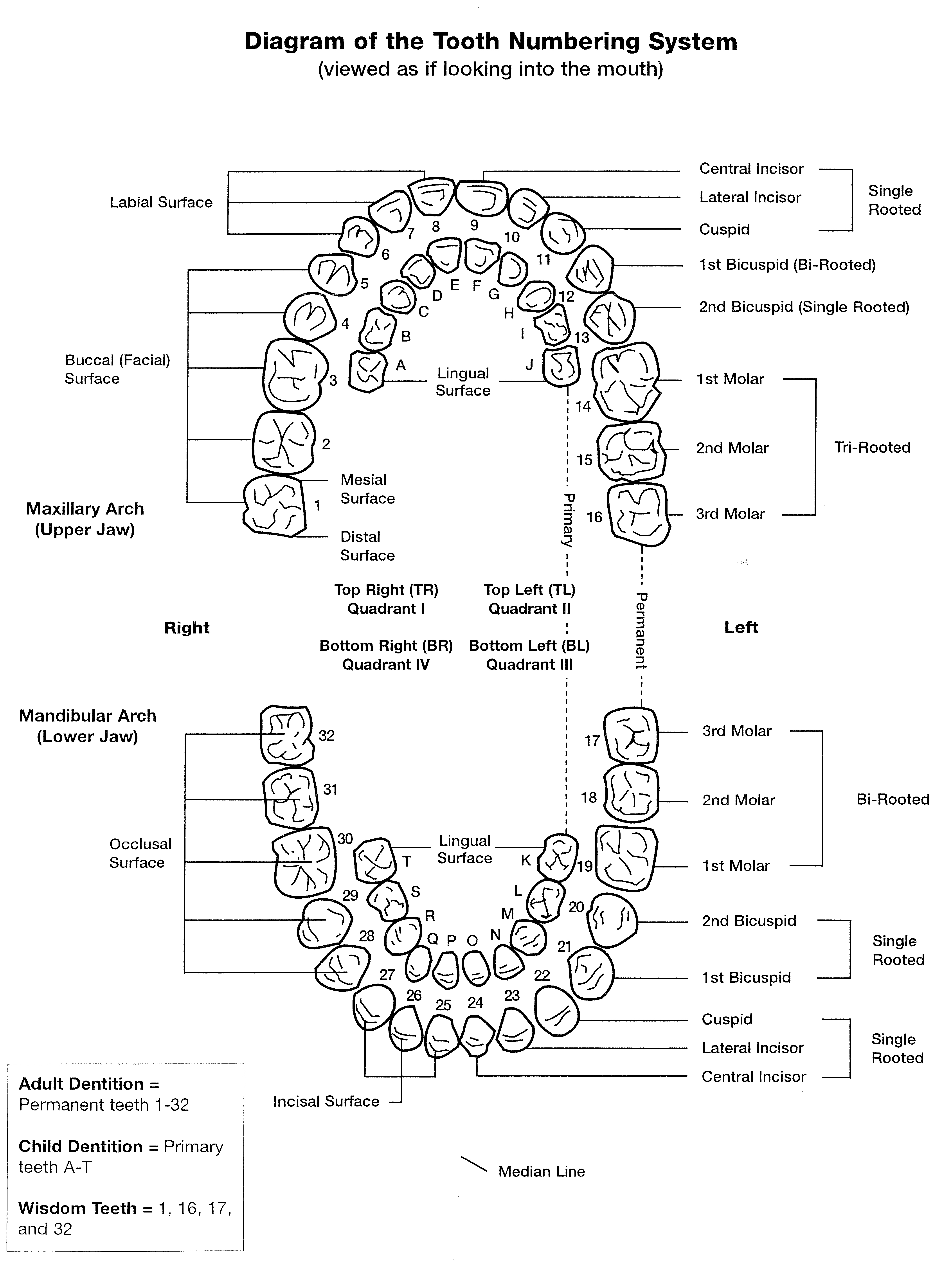
Tooth numbers and illustrations Pi Dental Center
These are used to identify primary or baby teeth. Quadrant 5 is the baby tooth version of quadrant 1. Quadrant 6 is the baby tooth version of quadrant 2 and so on and so forth. For example if you were referring to tooth 51, this is the baby first incisor. Including wisdom teeth there are 32 adult teeth and 20 baby teeth.

Tooth Number Chart to Identify Primary Teeth Eruption Charts
Left and Right on the teeth chart correspond to the patient's left and right respectively (patient's view). Primary (Baby or Deciduous) Teeth Names & Numbers. For primary teeth, most dentists in United States use a modified version of the Universal Numbering System, with each primary tooth assigned a letter (from A to T) instead of a number.
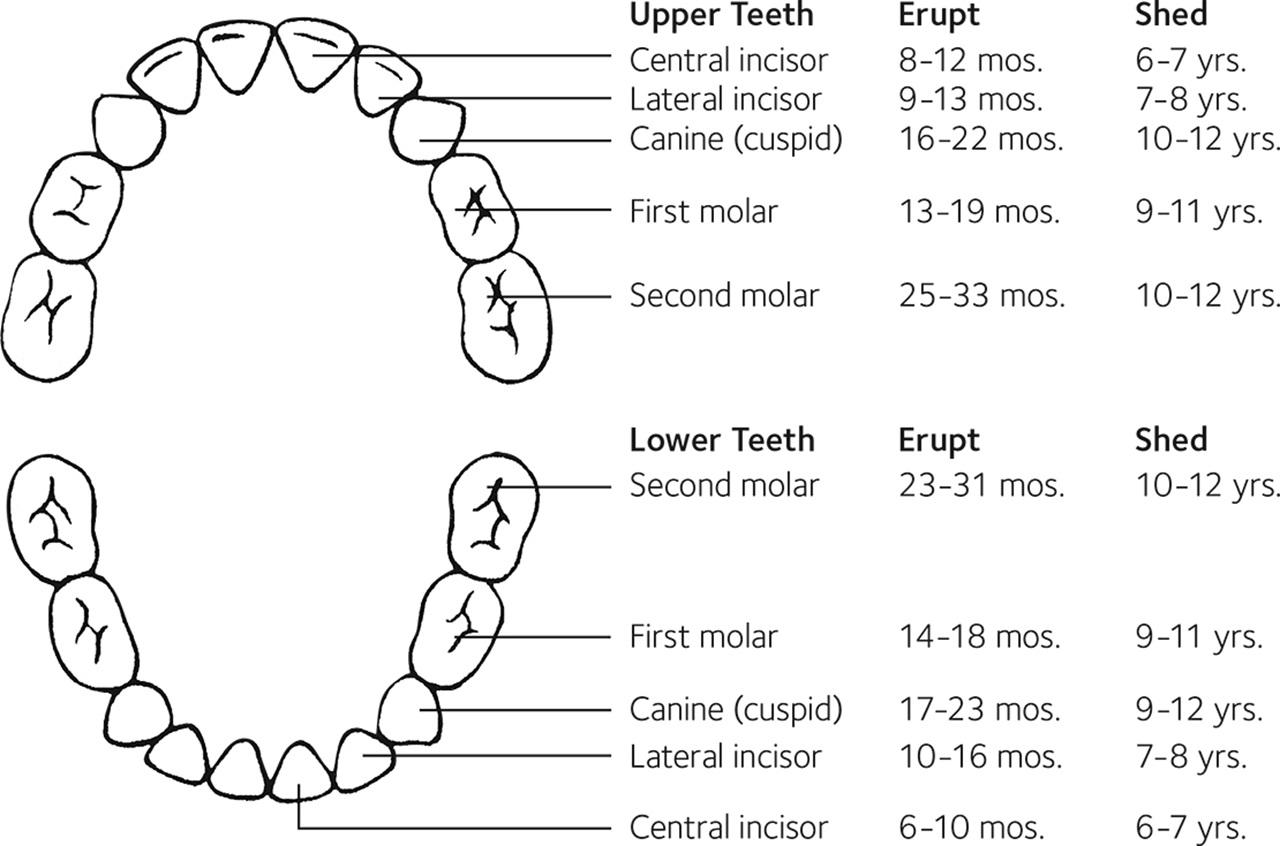
Eruption Charts MouthHealthy Oral Health Information from the ADA
Introduction. Toothache, and other dental problems, are common presenting complaints in both primary and secondary care. 1 Having a basic understanding of the dentition (or teeth) is important for all healthcare professionals. This article will discuss adult and child dentition, different tooth types, basic tooth cross-sectional and surface anatomy, and the various methods of dental notation.
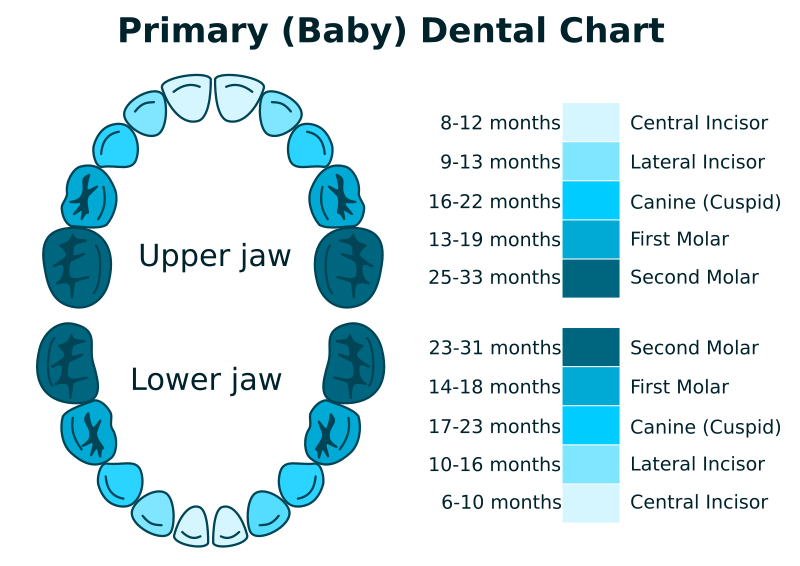
Primary Dental Chart Openclipart
Tooth number 1 is the tooth farthest back on the right side of your mouth in the upper (maxillary) jaw. Numbering continues along your upper teeth toward the front, and across to the tooth farthest back on the top left side (number 16). The numbers continue by dropping down to the lower (mandibular) jaw. Number 17 is the tooth farthest back on.

EMS SOLUTIONS INTERNATIONAL by DrRamonReyesMD marca registrada Tooth
Primary Tooth Development Upper Teeth Erupt Shed Central incisor 8-12 mos. 6-7 yrs. Lateral incisor 9-13 mos. 7-8 yrs. Canine (cuspid) 16-22 mos. 10-12 yrs. First molar 13-19 mos. 9-11 yrs. Second molar 25-33 mos. 10-12 yrs. Lower Teeth Erupt Shed Second molar 23-31 mos. 10-12 yrs. First molar 14-18 mos. 9-11 yrs.

Changing Dentition in the Tooth Chart Dentrix Ascend
Eruption Charts. Teeth vary in size, shape and their location in the jaws. These differences enable teeth to work together to help you chew, speak and smile. They also help give your face its shape and form. At birth people usually have 20 baby (primary) teeth, which start to come in (erupt) at about 6 months of age. They fall out (shed) at.

Printable Tooth Surface Chart
Primary teeth, or baby teeth, start to erupt around age 6 months. A total of 20 baby teeth will grow into the mouth. Every tooth has a purpose and works together to achieve proper nutrition and aid in speech development. Primary teeth are usually whiter than permanent teeth. They are also more fragile than adult teeth because their enamel is.

Teeth Chart 4 Free Templates in PDF, Word, Excel Download
This chart tells you when baby teeth come in (or erupt) in most children. If your child is getting his or her teeth and seems to be in pain, you can: rub the gums with a clean finger, or. rub the gums with the back of a small, cool spoon. If your child is still unhappy, your dentist, pharmacist or doctor can suggest an over-the-counter medicine.
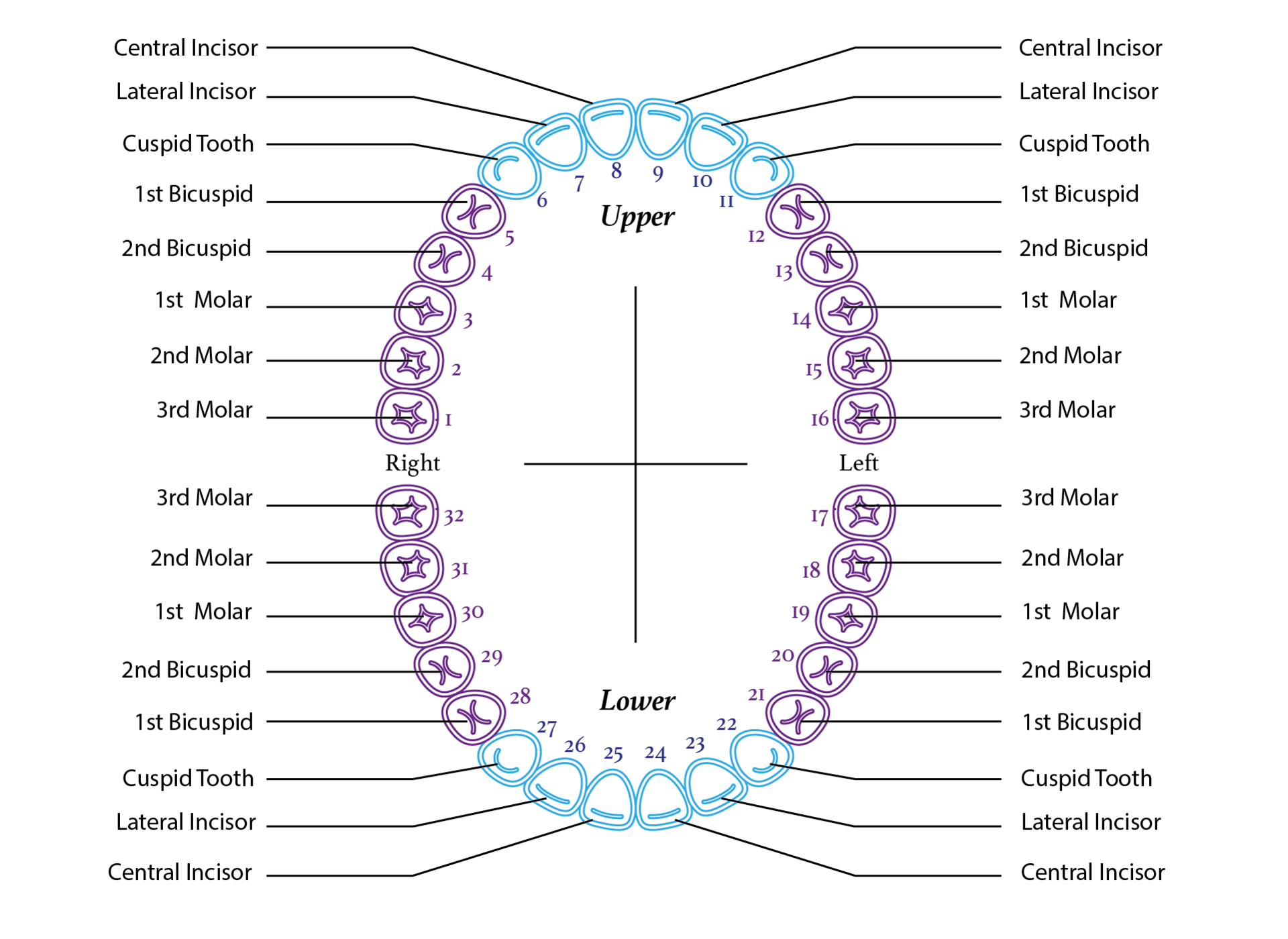
10 Best Tooth Chart Printable Full Sheet PDF for Free at Printablee
This system is very popular in the UK and Ireland. The 4 quadrants of the mouth are: UR - upper right. UL - upper left. LR - lower right. LL - lower left. Within each quadrant, the teeth are numbered from 1 to 8 going from the front tooth to the wisdom tooth: For example, UR1 is the upper right central incisor, and LL8 is the lower left.

Primary Teeth Chart HighRes Vector Graphic Getty Images
To track your child's dental development, consider using the Primary Tooth Chart: Easy Reference Guide. It provides information on the eruption and shedding of primary teeth. It's a handy tool for understanding tooth positioning and its impact on speech development. In essence, primary teeth are more than just temporary.